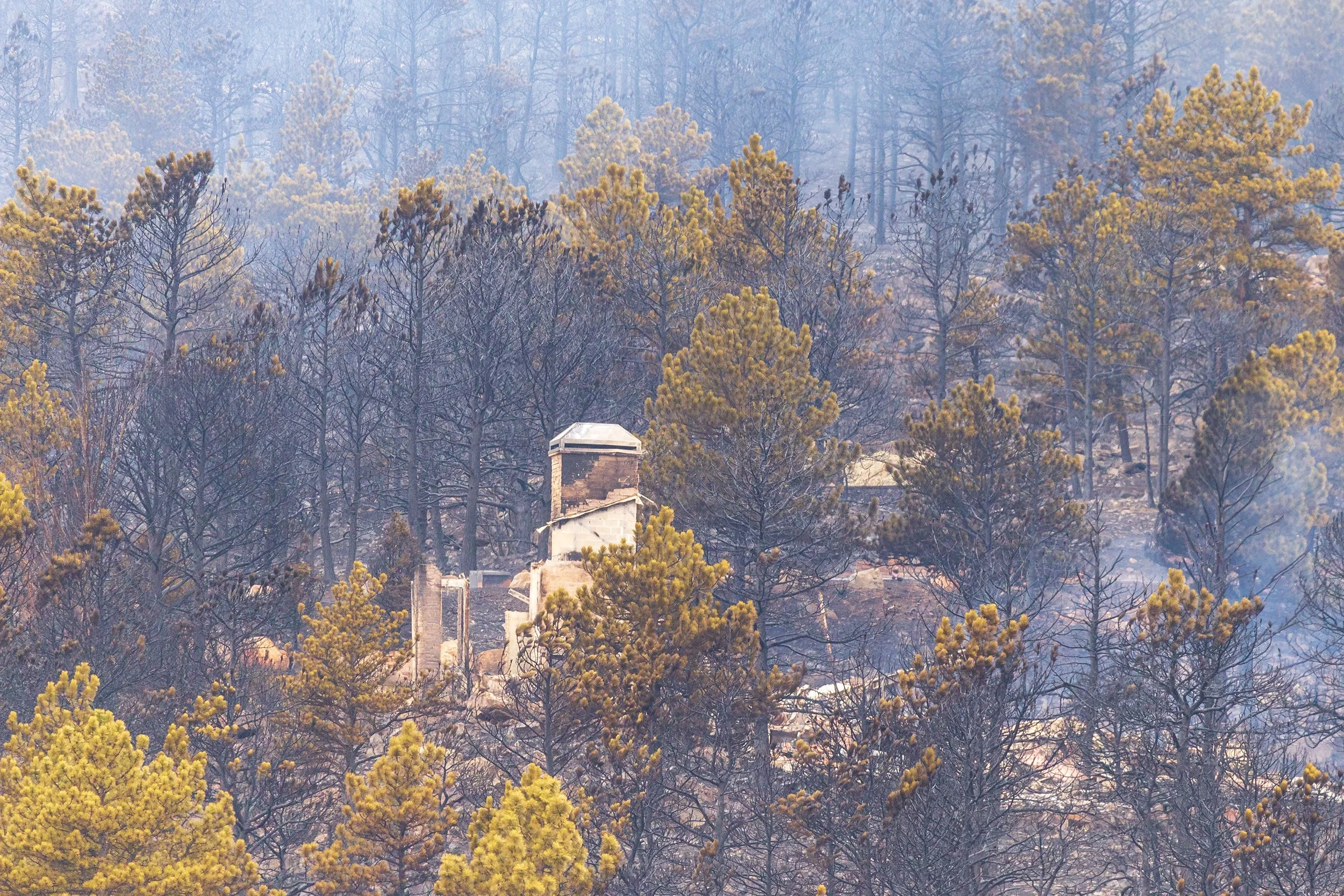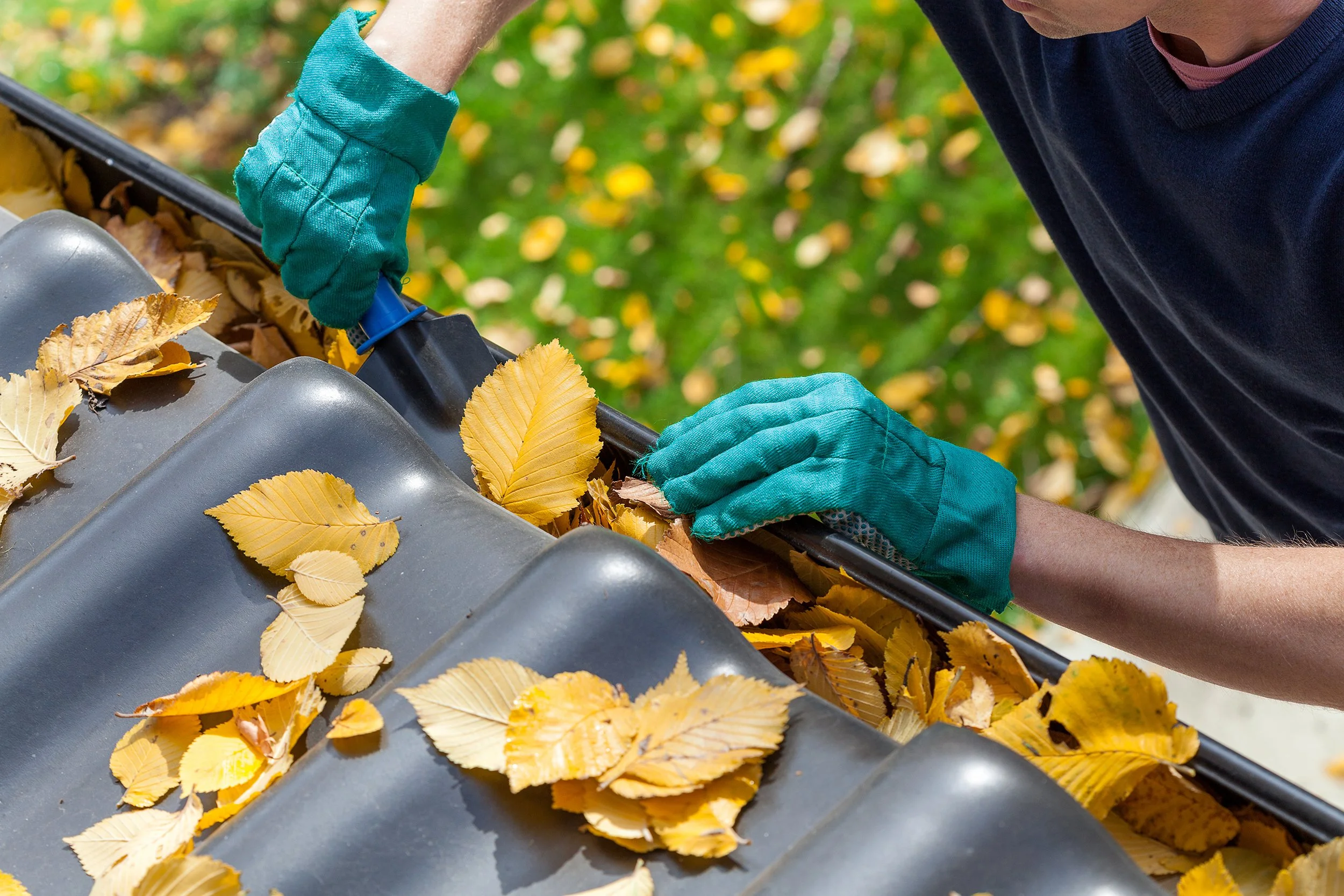Wildfire Season Home Prep: Boulder County's Fire Mitigation Requirements

Living in Boulder County means accepting that wildfire isn't a matter of "if" but "when." It's like living in earthquake country or tornado alley—except here, the threat arrives with an orange glow on the horizon and the smell of smoke drifting down from the foothills.
In 2022, 72% of Boulder County voters agreed that more mitigation work was needed, approving a new sales and use tax to increase the pace and scale of wildfire mitigation efforts. That's not just a civic duty—it's a collective acknowledgment that when it comes to wildfire, we're all in this together.
The Marshall Fire proved that Boulder County's wildfire risk extends far beyond heavily forested areas. Suburban neighborhoods that seemed immune to wildfire suddenly found themselves in evacuation zones, watching homes disappear in minutes. This wake-up call has fundamentally changed how Boulder County approaches wildfire mitigation, and if you own property here, understanding these requirements isn't optional—it's essential survival knowledge.
Understanding Boulder County's Wildfire Zones: Location Matters
Boulder County divides wildfire risk into zones that determine your mitigation requirements. Wildfire Zone 1 includes the heavily forested western areas, while Wildfire Zone 2 covers the eastern part of Boulder County, loosely defined as east of Highway 93, east of the City of Boulder, and east of the Foothills Highway.
If you're in Zone 1, you're looking at comprehensive defensible space requirements. Zone 2 residents get some relief—no defensible space is required outside of the noncombustible perimeter—but don't get complacent. The Marshall Fire demonstrated that Zone 2 properties can burn just as readily under the right conditions.
Understanding your zone isn't just academic—it determines everything from building permit requirements to insurance considerations. Check Boulder County's wildfire zone map, because assuming you're safe based on proximity to downtown Boulder or major roads is like assuming you won't get altitude sickness because you drove up slowly.
The Home Ignition Zone: Your 100-Foot Safety Bubble
Science has shown that the conditions within 100 feet of a home will determine whether or not the structure can survive a wildfire. This area, called the Home Ignition Zone (HIZ), is where your wildfire survival strategy either succeeds or fails spectacularly.
Think of the HIZ as your home's personal security detail. Creating a robust HIZ involves both home hardening and developing effective defensible space. It's not enough to clear some brush and call it good—you need a comprehensive approach that addresses both vegetation management and structural vulnerabilities.
90% of homes are destroyed indirectly by wind-borne embers carried ahead of a wildfire. These embers can travel over a mile, landing on roofs, accumulating against walls, and finding their way into vents and eaves. Your HIZ needs to account for this reality, not just the dramatic image of flames licking at your front door.
Boulder County's Building Code Requirements: When Mitigation Becomes Mandatory
If you're planning any significant work on your Boulder County property, wildfire mitigation isn't a suggestion—it's a legal requirement. Boulder County requires wildfire mitigation for all new buildings, additions, alterations, and repairs, including buildings designed and constructed in accordance with the International Building Code and International Wildland-Urban Interface Code.
Here's what triggers mitigation requirements:
New construction of any kind
Additions over 200 square feet (and sometimes smaller ones)
Accessory structures exceeding 120 square feet or located within 50 feet of habitable spaces
Agricultural buildings over 200 square feet or within 50 feet of habitable spaces
Any new covered projections, porches, decks, or deck work requiring a building permit
A Wildfire Partners or Regulatory Wildfire assessment must be completed before a permit is issued. This isn't bureaucratic red tape—it's Boulder County's way of ensuring every new project contributes to overall community fire safety rather than creating new vulnerabilities.
The process involves working with a Wildfire Mitigation Specialist who will help select and mark trees for removal to meet defensible space requirements. The majority of the defensible space must be completed before walls and roof are framed and sheathed, and all work must be completed before a Certificate of Occupancy is issued.
Defensible Space Zones: Creating Your Fire Break
Creating Defensible Space entails modifying the natural and introduced vegetation around your home to reduce fire hazard. This creates separation – both vertical and horizontal – between potential fuel sources.
Zone 1: The Noncombustible Perimeter (0-5 feet)
This is your home's first line of defense and the most critical area. Remove all flammable vegetation, including shrubs, slash, mulch, dead vegetation, pine needles, and ground debris. Remove all firewood and other combustible materials.
Think of this zone as a moat around your castle, except instead of water, you want bare ground, gravel, or carefully maintained noncombustible landscaping. Prune tree branches within a 10-foot area surrounding all structures.
This zone requires the most maintenance because it's where embers are most likely to find fuel and ignite materials that can spread fire directly to your home. Regular cleaning here isn't spring cleaning—it's year-round fire prevention.
Zone 2: The Transition Zone (5-30 feet)
This area allows for more vegetation but requires strategic management. Create horizontal spacing between plants and vertical separation between different vegetation layers. Remove ladder fuels—vegetation that allows fire to climb from grasses to shrubs to tree crowns.
Maintain your landscaping like you're designing a natural fire break. Plants should be spaced so that if one ignites, flames can't easily jump to the next. This zone can be beautiful and fire-safe, but it requires thoughtful plant selection and ongoing maintenance.
Zone 3: The Extended Zone (30-100 feet)
Here, you're focusing on forest management principles. Thin dense vegetation, remove dead and dying trees, and create spacing between tree crowns. Remove fallen leaves, needles, twigs, bark, cones, and small branches, though they may be permitted to a depth of three inches.
This zone often extends beyond your property line, which is where community cooperation becomes essential. If you effectively mitigate your property, you may help save your neighbor's home and vice versa.
Home Hardening: Making Your Structure Fire-Resistant
While defensible space addresses the area around your home, home hardening focuses on the structure itself. Home hardening is the process of making your existing home and accessory structures as fire resilient as possible through home retrofits and strategic maintenance.
Roof and Gutters: Your First Line of Defense
Your roof is where most ember attacks begin. Clean gutters regularly—accumulated pine needles and leaves are perfect ember-catching material. Install gutter guards and ensure roof materials are fire-resistant. Metal roofing performs better than wood shakes, but even asphalt shingles can be adequate if properly maintained.
Check for gaps around roof edges, vents, and chimneys where embers can enter. These small openings can allow embers to reach the interior of your home, starting fires from the inside out.
Siding and Windows: Closing the Gaps
Inspect siding for cracks, gaps, or deterioration that could allow ember entry. Vinyl siding can melt and expose underlying materials, while wood siding obviously presents fire risk. Whatever your siding material, ensure it's in good repair and properly sealed.
Windows facing wildland areas deserve special attention. Single-pane windows are more likely to fail during radiant heat exposure. Consider upgrading to dual-pane windows or installing shutters for protection during high-risk periods.
Vents and Openings: The Hidden Vulnerabilities
Foundation vents, attic vents, and crawl space openings are ember entry points many homeowners overlook. Install 1/8-inch mesh screening over vents—large enough for airflow, small enough to stop embers. Avoid vinyl or plastic vent materials that can melt and create larger openings.
The Wildfire Partners Program: Your Local Resource
Wildfire Partners, Boulder County's wildfire mitigation program, provides homeowners with technical and financial assistance to prepare for wildfires, create defensible space, and make homes more fire resistant.
The program offers assessments, education, and sometimes financial incentives for mitigation work. Participation in Wildfire Partners is required for Short-Term Rentals and Vacation Rentals located in Wildfire Zone 1, but any homeowner can benefit from their expertise.
A Wildfire Partners assessment gives you a professional evaluation of your property's vulnerabilities and a specific action plan for improvements. They understand Boulder County's unique conditions and can prioritize improvements based on your property's specific risks and your budget.
Assessment Requirements and Timing
A Wildfire Partners assessment within five years is required before initial licenses for short-term rentals, with certification required at first renewal and re-assessment every six years. Even if you're not operating a rental property, this timeline offers a good framework for regular property evaluation.
Wildfire conditions change, vegetation grows, and home conditions evolve. What was adequate mitigation five years ago may need updating based on new research, changing climate conditions, or modifications to your property.
City of Boulder's Detailed Home Assessments
If you live within Boulder city limits, take advantage of the free Detailed Home Assessment (DHA) program that provides actionable improvements to reduce your wildfire risk. These assessments go beyond the curbside evaluations to provide specific recommendations for your property.
The DHA report will include information about improvements you could make to your home that would better its wildfire resiliency, along with vegetation management advice for creating better defensible space. While you're not required to complete recommended improvements, they provide a roadmap for enhancing your home's fire resistance.
The assessments examine everything from roof condition and siding type to outbuilding placement and vegetation management. Boulder Fire-Rescue personnel conduct these assessments, bringing professional expertise to your specific situation.
Maintenance Schedules: Year-Round Vigilance
Wildfire preparation isn't a once-and-done project—it requires ongoing maintenance that changes with seasons and weather conditions.
Spring Preparation (March-May)
Clean gutters and remove accumulated debris from winter
Inspect and repair any winter damage to vents, siding, or roofing
Begin vegetation management as growing season starts
Update emergency plans and evacuation routes
Test and refresh emergency supply kits
Summer Vigilance (June-August)
Monitor vegetation moisture levels and adjust watering schedules
Maintain defensible space zones as vegetation grows
Keep lawns well-watered but not overgrown
Monitor local fire restrictions and adjust outdoor activities accordingly
Ensure emergency supplies are easily accessible
Fall Preparation (September-November)
Conduct major vegetation maintenance before winter dormancy
Remove fallen leaves and dead vegetation from defensible space zones
Inspect and clean chimneys and heating systems
Update insurance documentation and emergency contacts
Review and practice evacuation plans with family members
Winter Maintenance (December-February)
Monitor for and remove accumulated debris from wind and storms
Maintain access roads and driveways for emergency vehicles
Use winter months for home hardening projects
Review and update emergency supplies
Plan next year's vegetation management projects
Boulder County's Financial Support Programs
The 0.1% countywide sales and use tax approved by voters funds work in two programmatic areas: strategic forest and grassland management projects, and community partnerships and programs to help residents prepare for wildfires.
This funding supports cost-share programs, educational resources, and technical assistance for homeowners. While specific program details continue to evolve, the county has committed to helping residents with both the knowledge and financial resources needed for effective mitigation.
Check with Boulder County's Wildfire Mitigation Team about current programs and eligibility requirements. Some programs require using approved contractors, while others offer reimbursements for qualifying work completed independently.
Simplifying Wildfire Mitigation: The Home Concierge Advantage
Between defensible space zones, home hardening requirements, and coordinating multiple contractors for different aspects of mitigation work, the process can feel like managing a small construction project.
That's where Willow's home concierge service transforms wildfire preparation from a daunting checklist into a managed process. Instead of trying to coordinate forestry contractors, home hardening specialists, and permit requirements yourself, Willow becomes your single point of contact for comprehensive mitigation planning and execution.
Expert Assessment and Planning: Your Willow advisor understands Boulder County's specific wildfire mitigation requirements and can help prioritize improvements based on your property's risk level and your budget. They know the difference between Zone 1 and Zone 2 requirements and can guide you through Wildfire Partners assessments or City of Boulder DHA recommendations.
Vetted Contractor Network: Willow maintains relationships with qualified contractors who understand Boulder County's mitigation standards. These aren't random recommendations—they're professionals who've proven their expertise in defensible space creation, vegetation management, and home hardening specific to our local conditions.
Project Coordination: From initial planning through final inspections, Willow manages the entire process. They coordinate between forestry contractors for vegetation removal, home improvement specialists for structural hardening, and county inspectors for compliance verification. No more playing phone tag with multiple contractors or wondering if work meets Boulder County standards.
Ongoing Maintenance Management: Wildfire mitigation isn't a one-time project—it requires ongoing maintenance and seasonal adjustments. Willow tracks your mitigation schedule, reminds you of maintenance needs, and coordinates regular upkeep to ensure your defensible space and home hardening measures remain effective.
Compliance Assurance: Willow ensures all work meets Boulder County requirements and building codes. They understand permit requirements and maintain documentation for insurance and resale purposes.
For Boulder County homeowners who want comprehensive wildfire protection without the stress of managing complex mitigation requirements, Willow's home concierge service provides the expertise and coordination needed to protect your most valuable investment.
Insurance Considerations: Coverage and Discounts
Proper wildfire mitigation can significantly impact your insurance costs and coverage options. Many insurers offer discounts for Wildfire Partners certification or completion of recommended mitigation measures.
Document your mitigation work with photos and receipts. Some insurers require periodic re-certification or proof of ongoing maintenance to maintain discounts. After major mitigation projects, contact your insurance agent to discuss potential premium reductions.
Consider reviewing your coverage limits and policy exclusions. Wildfire damage can be expensive, and replacement costs continue to rise. Ensure your coverage reflects current replacement costs and includes necessary living expenses if you're displaced during recovery.
Community Approaches: Neighborhood Coordination
Wildfires can impact entire communities, and linked defensible spaces are a key community protection strategy. Individual mitigation efforts are most effective when coordinated with neighbors.
Consider organizing neighborhood mitigation days where neighbors work together on common areas or shared property lines. Coordinate vegetation management schedules so efforts complement rather than conflict with each other.
Discuss evacuation routes and emergency communication plans with neighbors. During actual emergencies, coordinated neighborhood responses can save lives and property. Share resources like chipper services or contractor recommendations to reduce costs for everyone.
Emergency Preparedness: Beyond Mitigation
Even with excellent mitigation, evacuation may be necessary. Boulder County Communities can sign up for the BOCO Alert System through Everbridge to receive emergency alerts. Register for multiple addresses if you work or spend time in different parts of the county.
Maintain go-bags with essential documents, medications, and supplies. Include printed copies of insurance policies, identification documents, and emergency contacts—digital copies may be inaccessible during evacuations.
Plan multiple evacuation routes and practice them. Boulder County's geography can limit escape routes during emergencies, and routes that work during normal conditions may be blocked during wildfire events.
The Investment Perspective: Costs vs. Benefits
Wildfire mitigation requires upfront investment, but the costs pale compared to potential losses. The Marshall Fire destroyed over 1,000 structures in a matter of hours, representing hundreds of millions in losses and immeasurable personal trauma.
View mitigation costs as insurance premiums—you hope never to need the protection, but you'll be grateful for the investment if wildfire threatens your property. Many mitigation improvements also provide additional benefits: better landscaping, improved home efficiency, and enhanced property values.
Consider mitigation work as part of regular home maintenance rather than an additional burden. Trees need pruning, gutters need cleaning, and siding needs maintenance regardless of fire risk. Timing these activities with fire safety in mind maximizes both benefits and efficiency.
Technology and Monitoring: Modern Tools for Ancient Threats
Modern technology offers new tools for wildfire preparation and monitoring. Weather stations can help you track conditions that increase fire risk. Security cameras can provide early wildfire detection and help you monitor your property remotely during evacuations.
Smart home systems can automate some fire safety measures, like closing vents or shutting off utilities when smoke is detected. While technology can't replace proper mitigation, it can enhance your preparedness and response capabilities.
Consider subscribing to professional fire weather monitoring services that provide detailed local forecasts and risk assessments. These services can help you time maintenance activities and adjust your vigilance based on current conditions.
The Bottom Line: Preparation as Peace of Mind
Boulder County's wildfire mitigation requirements aren't bureaucratic obstacles—they're science-based strategies for protecting lives and property in an increasingly fire-prone landscape. Boulder County has a long history of both beneficial and destructive wildfires, and wildfire risk will continue to increase.
The question isn't whether wildfire will affect Boulder County again, but when and where. Your mitigation efforts determine whether your home becomes another loss statistic or a survival story that inspires neighbors and validates the science behind defensible space and home hardening.
Every cleared gutter, every pruned tree, and every sealed vent represents a small victory against wildfire's destructive potential. These individual actions, multiplied across thousands of Boulder County properties, create the collective resilience that helps communities survive and recover from wildfire events.
Don't wait for smoke on the horizon to begin your mitigation work. Start with the most critical areas—your noncombustible zone and home hardening priorities—and build from there. Boulder County's resources, from Wildfire Partners assessments to home concierge services, are designed to help you succeed.
The goal is to give your home the best possible chance of survival while ensuring you and your family can evacuate safely when necessary. In Boulder County, that preparation isn't just smart homeownership—it's an essential part of being a responsible community member in fire country.
Home Concierge for Luxury Home Property Management
At Willow, we take a proactive approach to home care, ensuring your luxury home remains in pristine condition year-round. From routine maintenance and seasonal upkeep to coordinating trusted vendors for repairs and upgrades, we handle it all with a high-touch, concierge-style experience tailored to your needs.
Let us take home management off your plate. Contact Willow today to learn how our services can help you protect, maintain, and enhance your home with ease.
Willow is a luxury home concierge service based in Boulder, Colorado. We care about your home and giving you back your time to do the things you care about most.
How it Works






